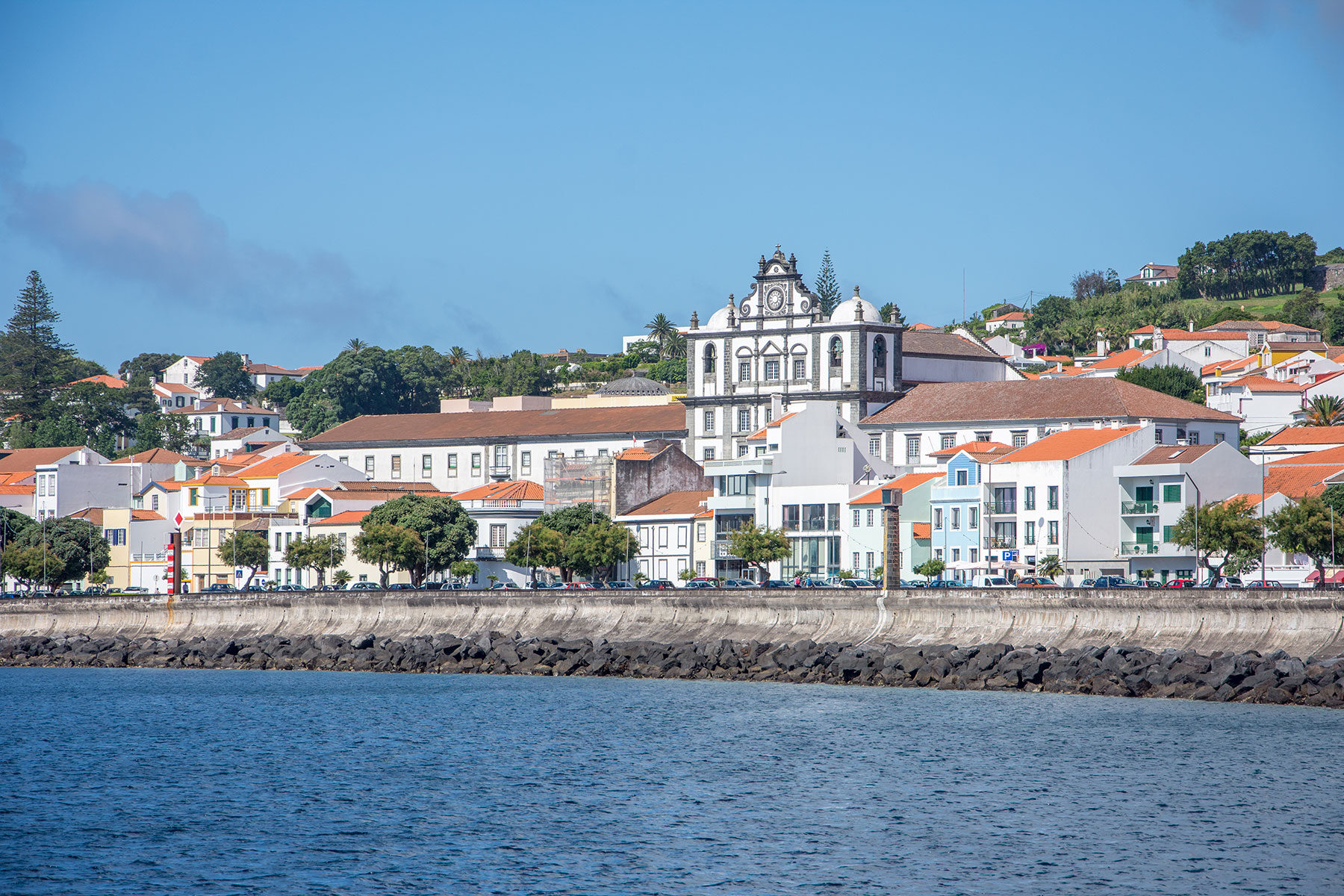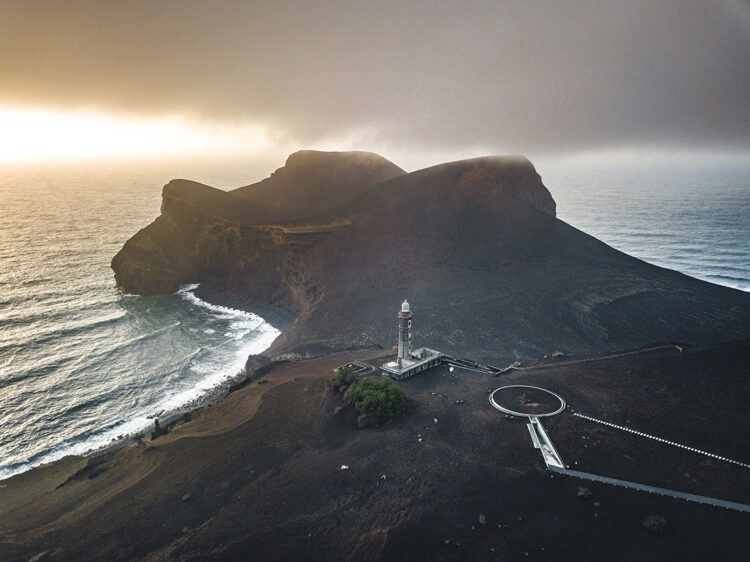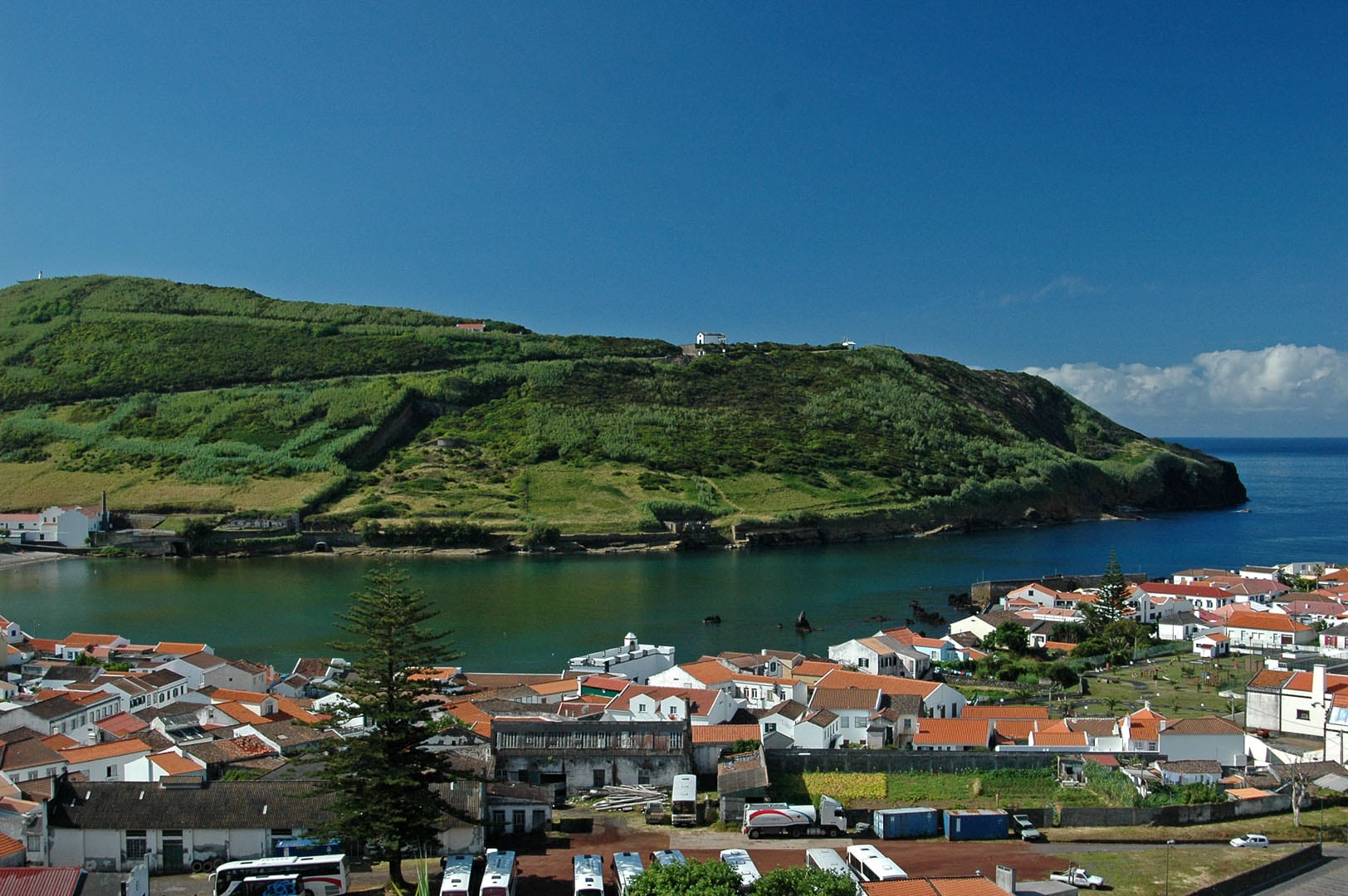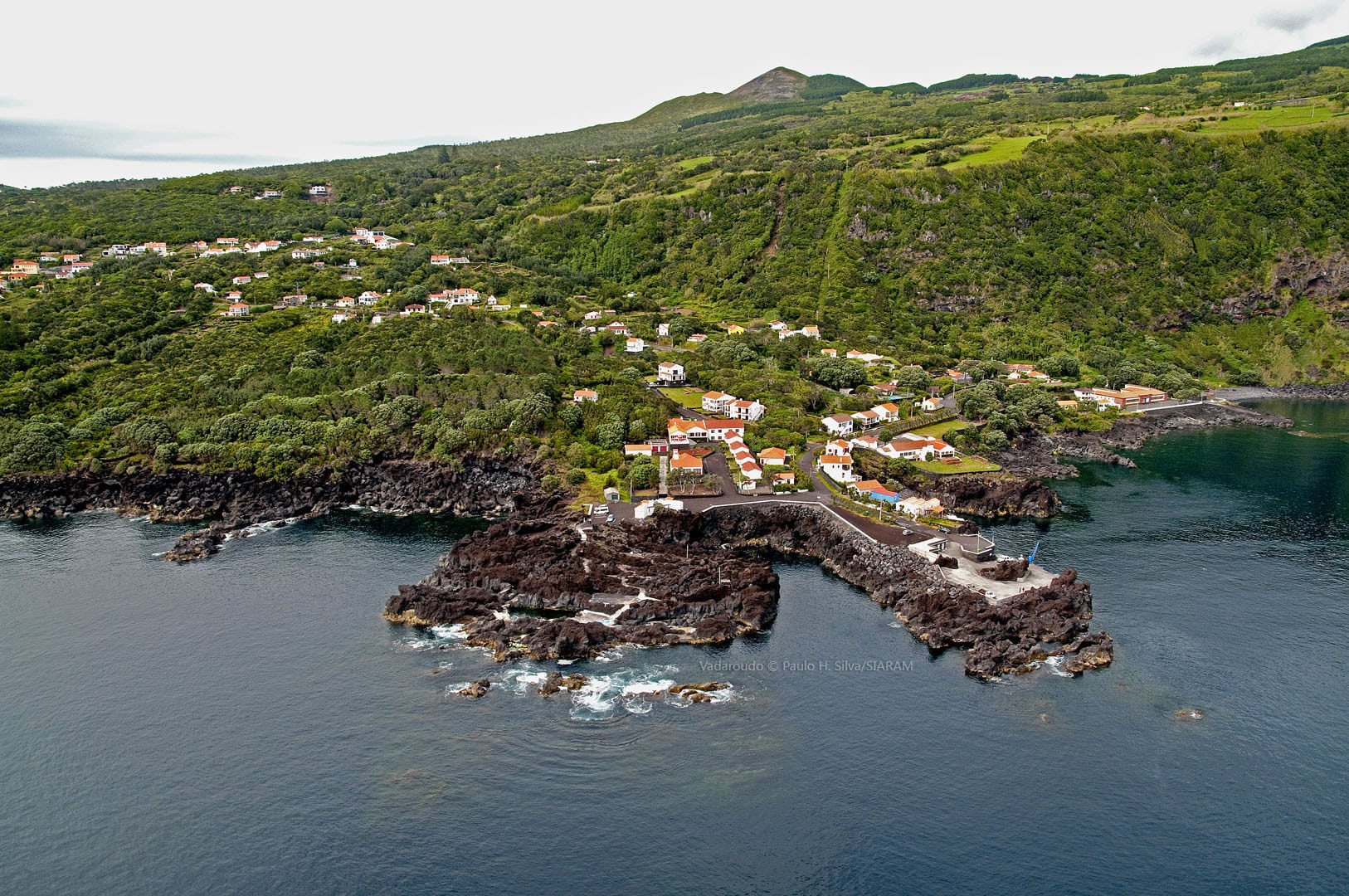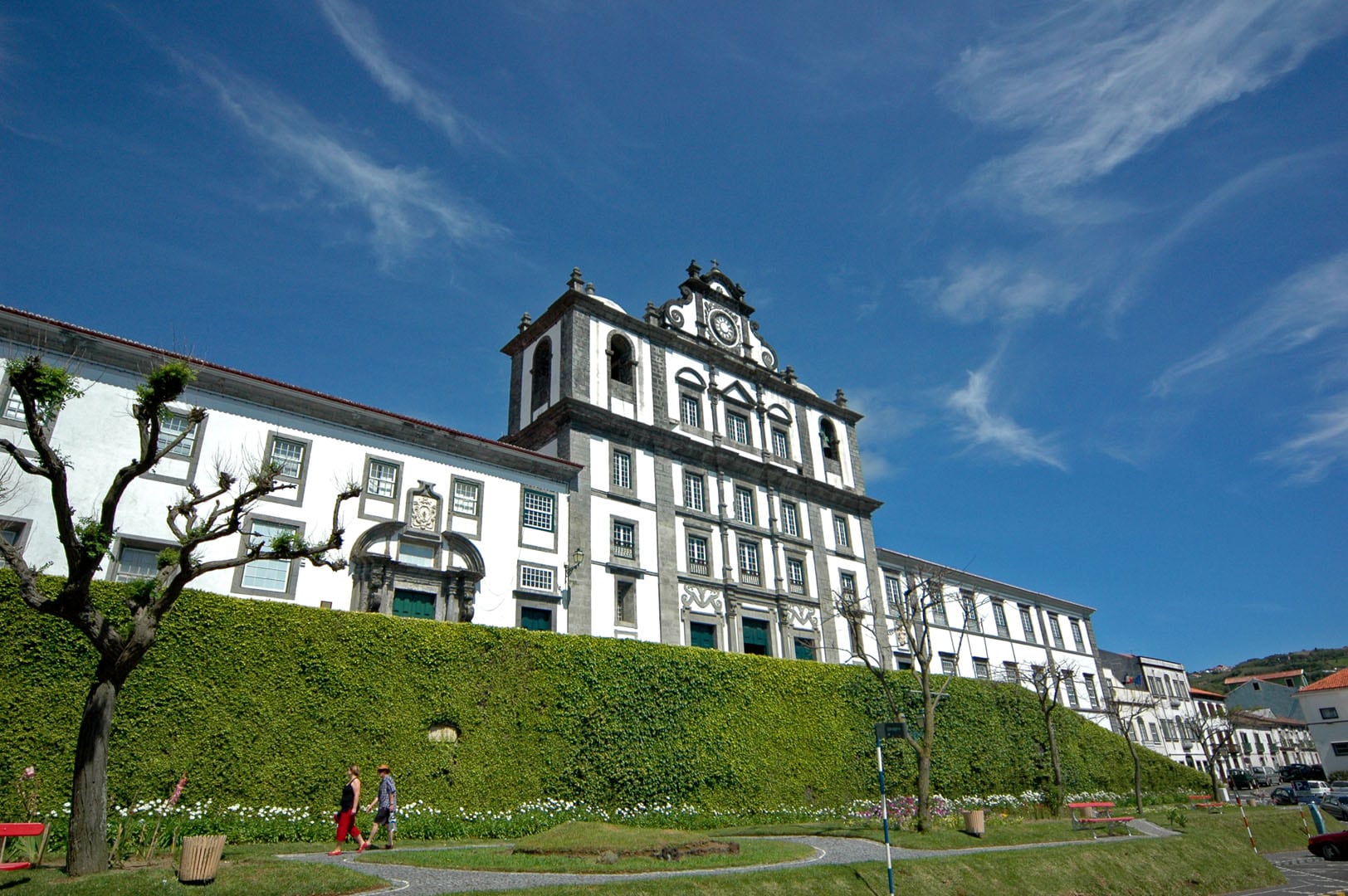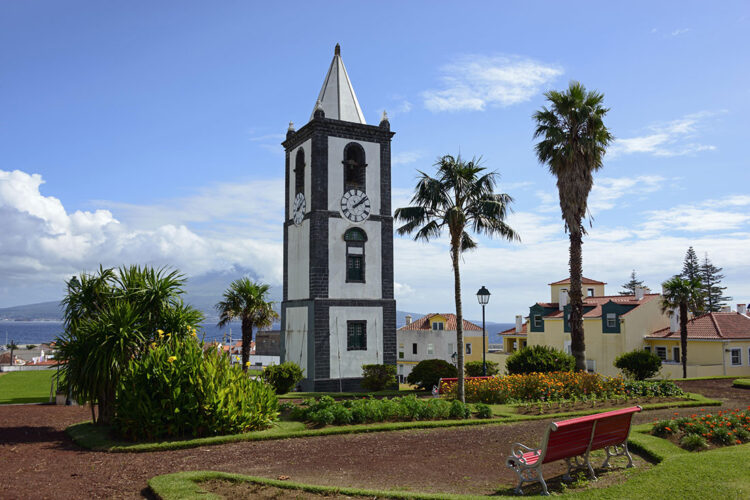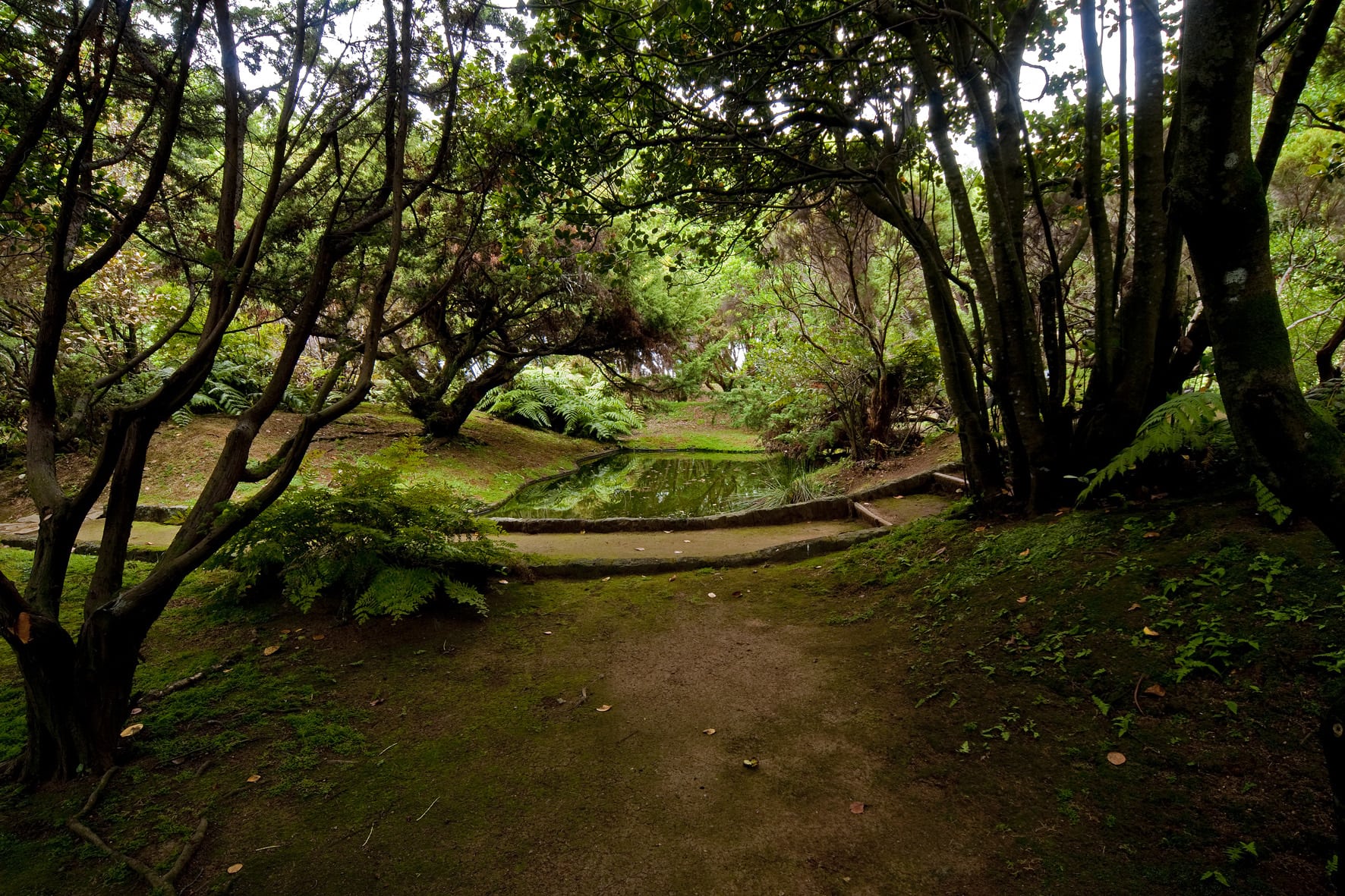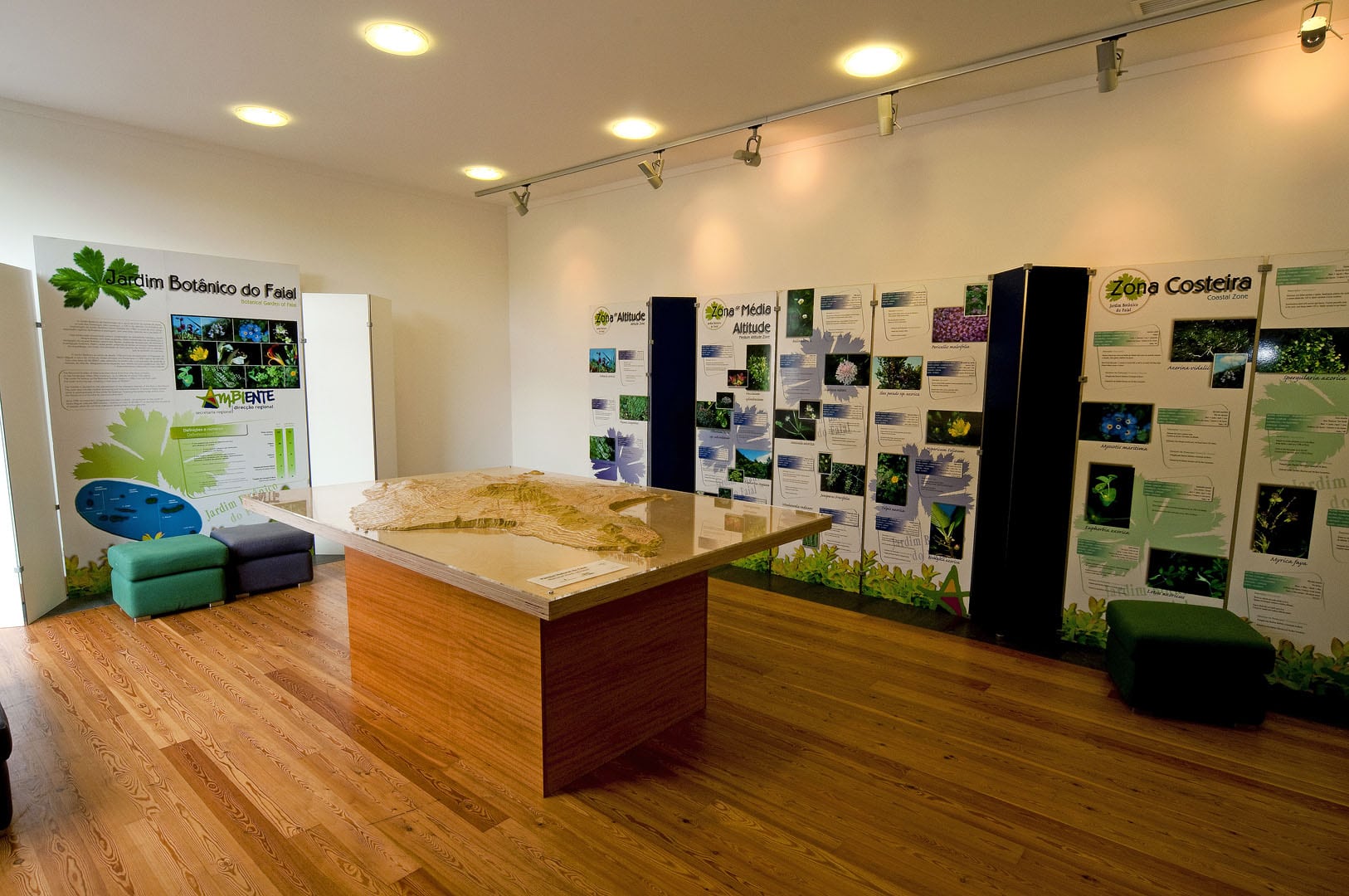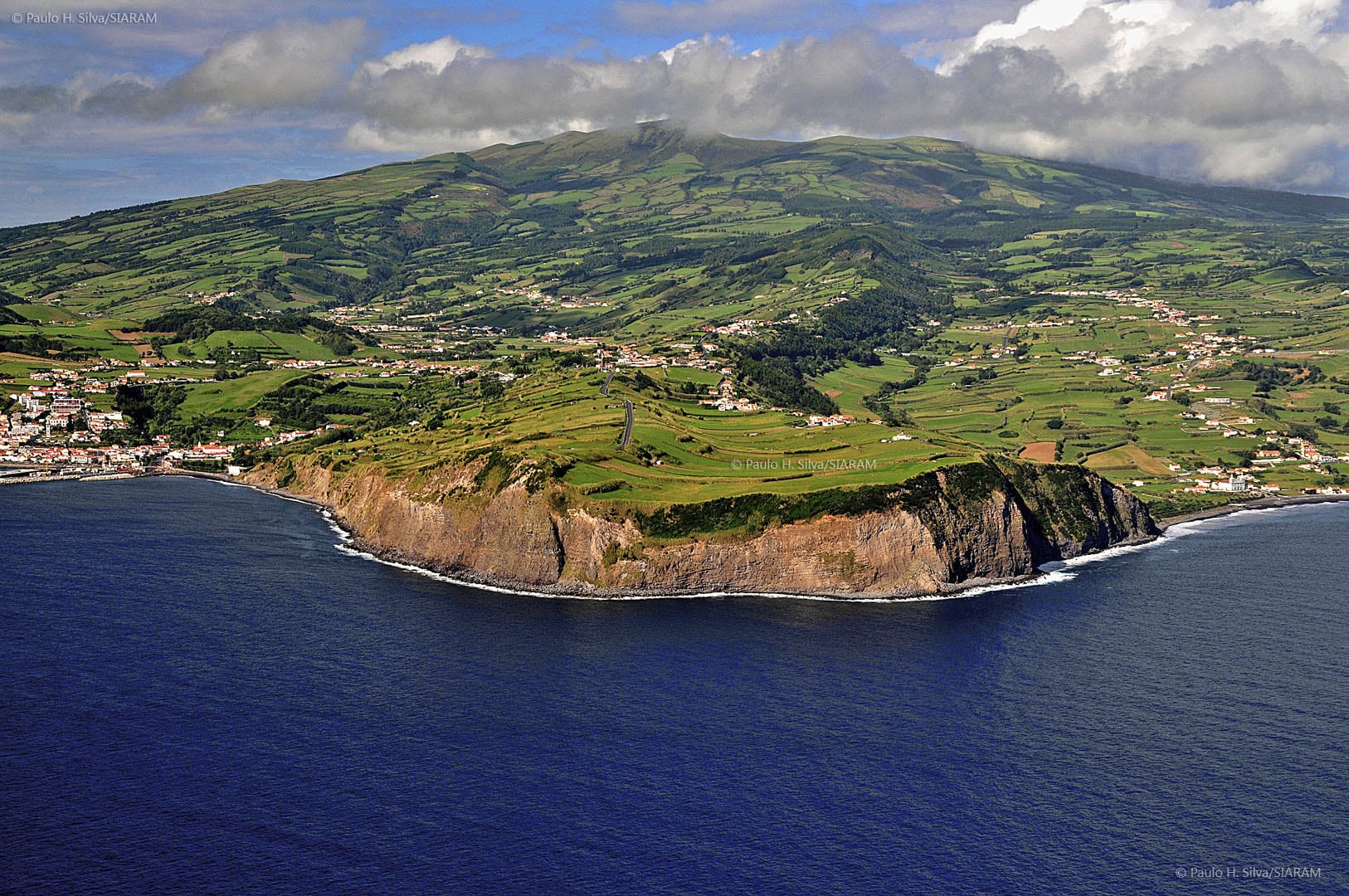Faial Island: What to Visit and Points of Interest
The Faial Island is located in the Azores archipelago and is part of the Central Group, being the westernmost vertex of the Triangle Islands.
Its formation is of volcanic nature with a rugged landscape, making it the third most populated island in the Azores. The highest point is Cabeço Gordo, located in the Caldeira, with an elevation of 1,043 meters.
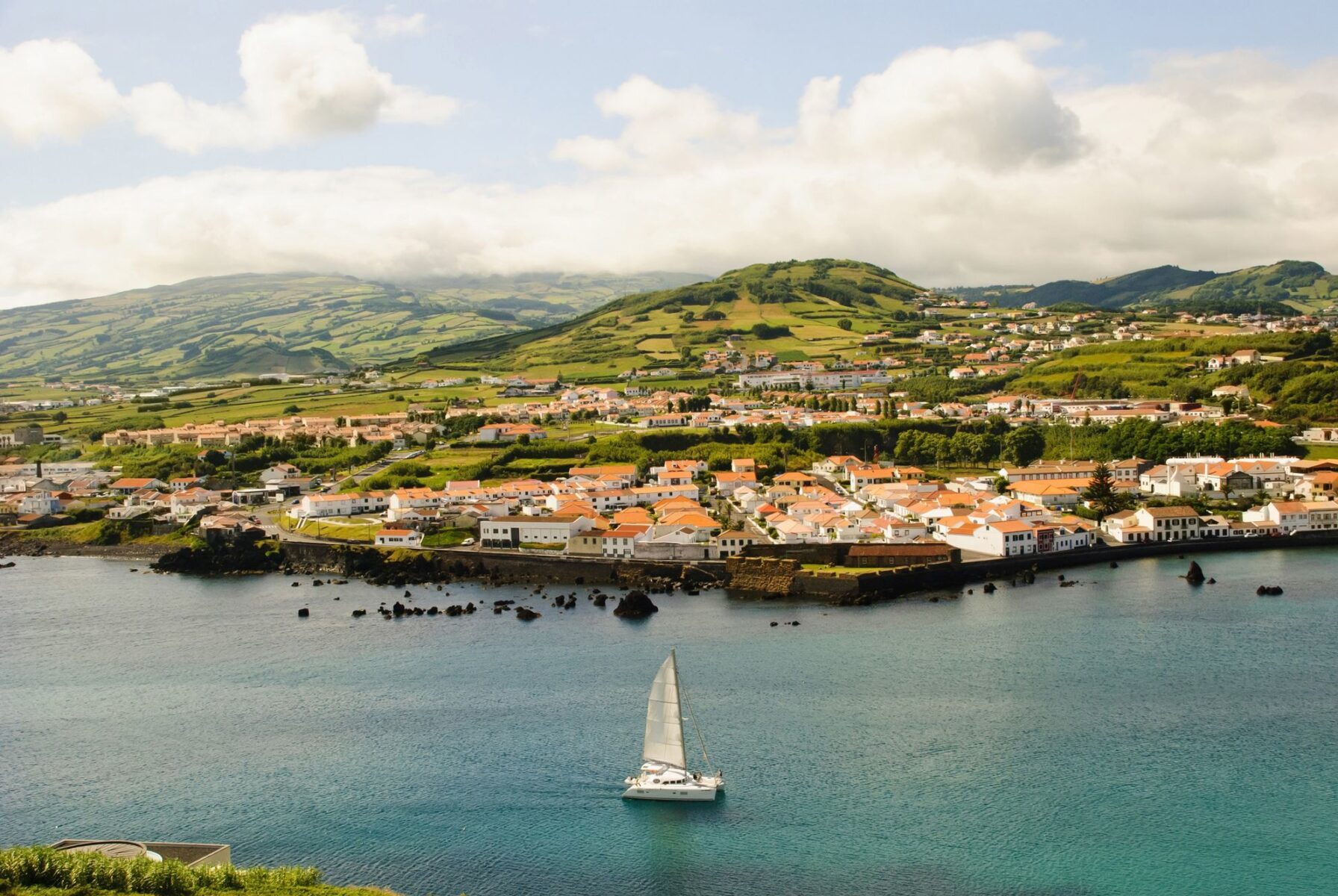
Learn more about Faial Island, the places and points of interest to visit in this article.
Índice de conteúdos
- Faial Island
- Places to Visit on Faial Island
- City of Horta
- Marina da Horta
- Caldeira do Cabeço Gordo
- Vulcão dos Capelinhos
- Centro de Interpretação do Vulcão dos Capelinhos
- Monte da Guia & Miradouro do Monte da Guia
- Forte de Porto Pim
- Praia de Porto Pim
- Praia de Almoxarife
- Praia do Norte
- Piscinas do Varadouro
- Igreja São Salvador (Igreja Matriz)
- Torre do Relógio
- Jardim Botânico do Faial
- Ponta da Espalamaca
- Other Places to Visit and Activities on Faial Island
Faial Island
This island witnessed the most impressive phenomenon of the entire archipelago in the last hundred years: the eruption of the Capelinhos Volcano, which occurred between 1957 and 1958. This phenomenon transformed the island’s landscape and increased its total area.
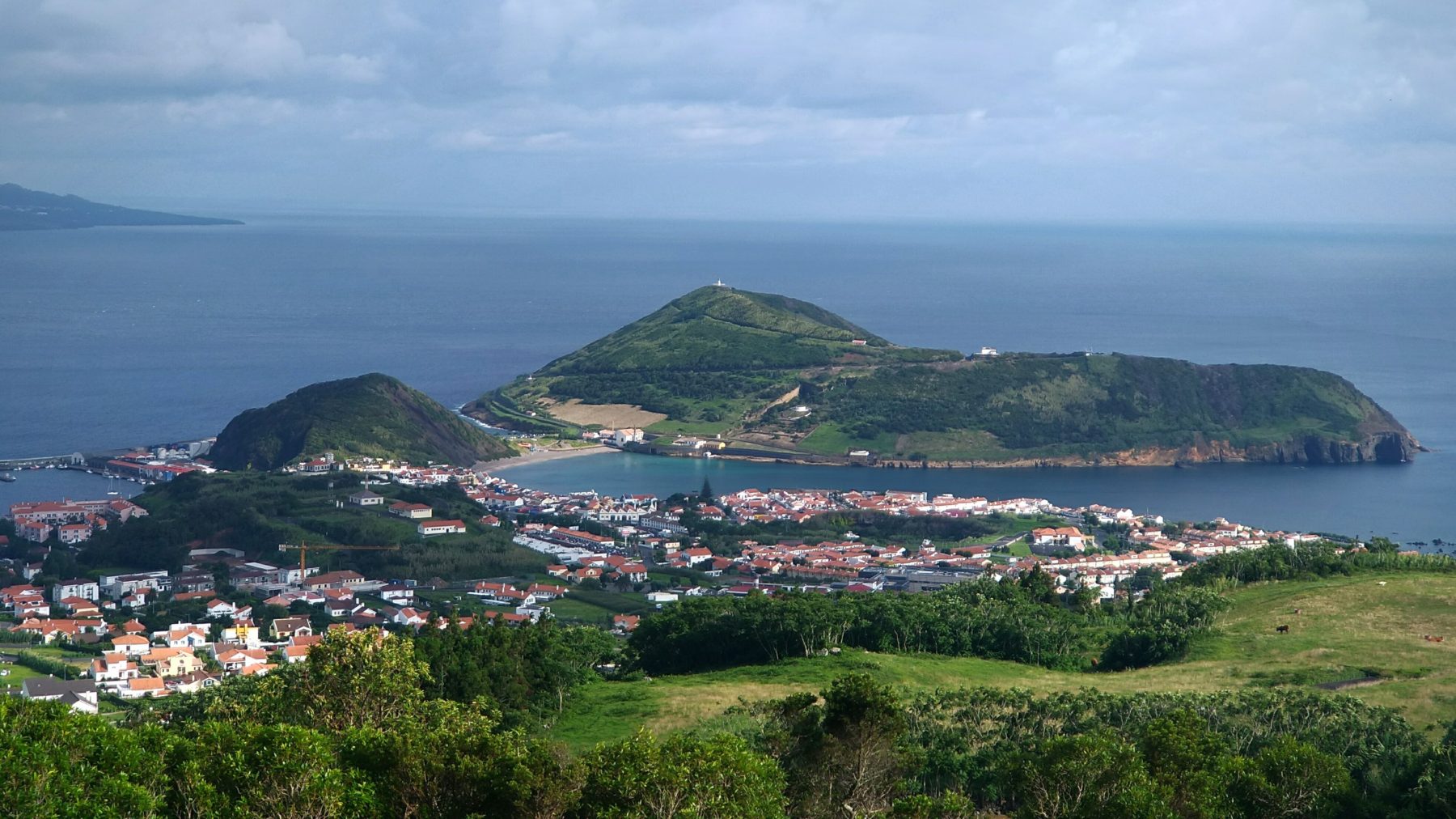
Fotografia de Rui Simas
It is believed that the discovery of Faial Island occurred in 1427, with its colonization happening in 1432 by settlers from Flanders. The name Faial arose due to the high number of these trees in the region, but many refer to it as the “Blue Island.”
Historically, it was from the 17th century onwards that Faial experienced significant development, becoming a vital commercial hub, exporting wine and other agricultural products, in addition to the growth of the whaling industry, which bolstered its economy despite various natural disasters throughout its history.
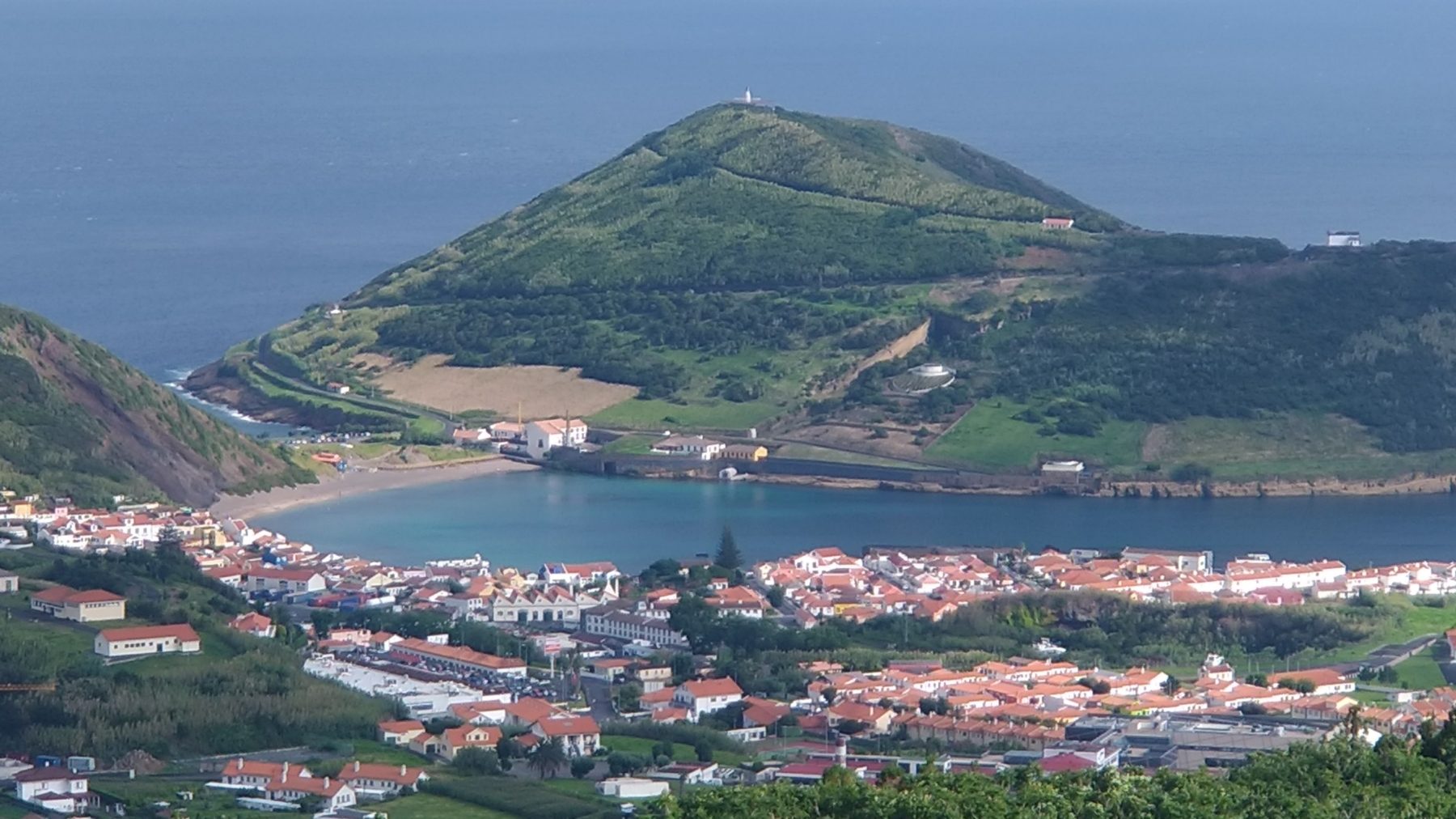
Fotografia de Rui Simas
The city of Horta is the capital and heart of Faial Island, featuring stunning architecture that sets it apart from all other islands in the archipelago, especially for being a city close to the sea. The various vessels arriving at the Marina da Horta contribute significantly to the vibrancy and color of the city.
Other popular activities on Faial Island include water sports such as sailing, windsurfing, rowing, diving, snorkeling, among others.
The island’s flora and fauna are lush, rich in rock formations and volcanic eruptions. For those who enjoy diving or snorkeling, the underwater landscape is another wonder to explore.
See below the main attractions of this beautiful Azorean island that certainly deserve your visit.
Places to Visit on Faial Island
City of Horta
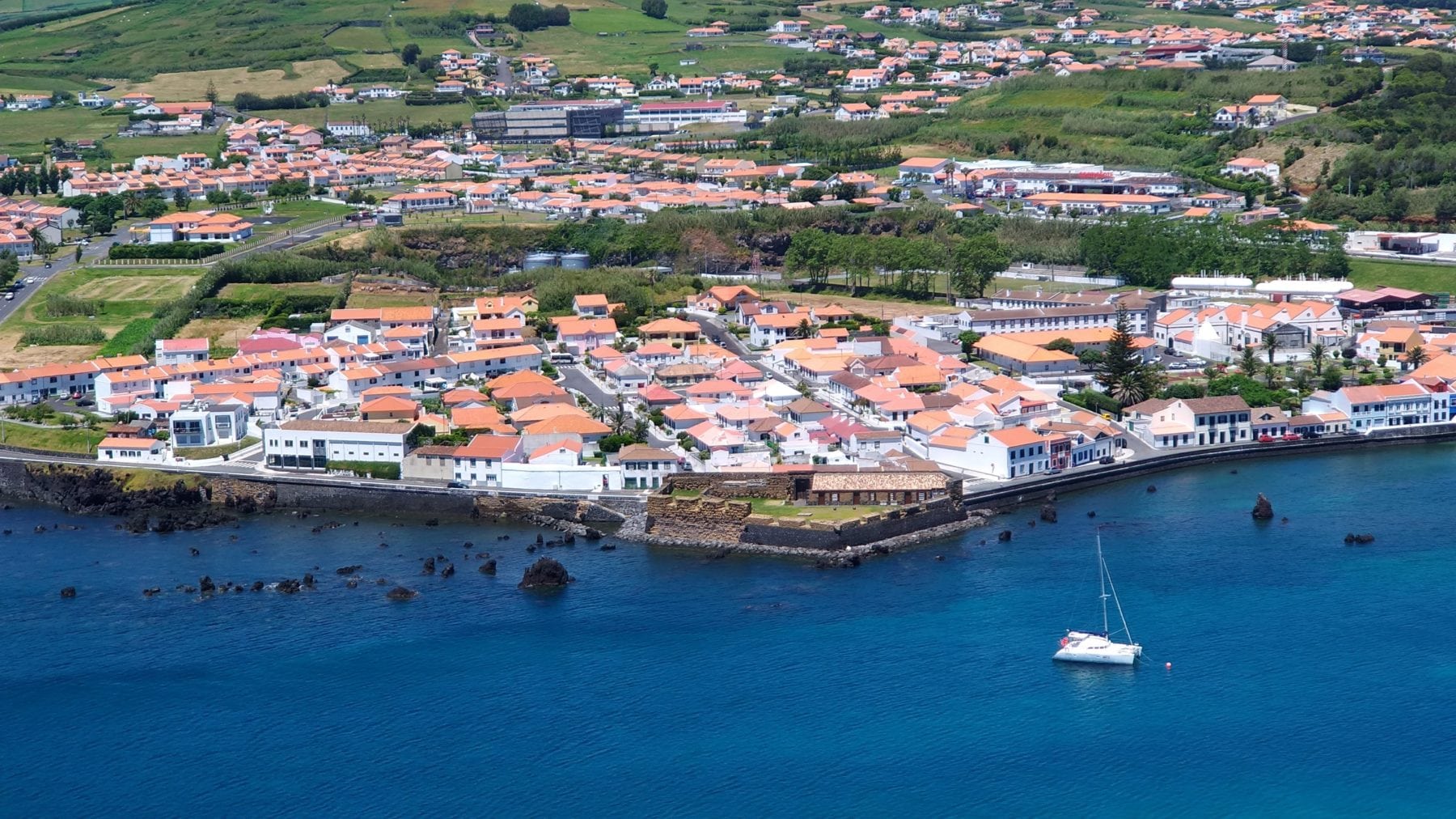
Fotografia de Rui Simas
The historic city of Horta is a delight for all who visit. It is located on the eastern coast of the island, facing the neighboring Pico Island, where you can see the Mountain of Pico, which stands at 2,351 meters high.
The city has various attractions, and for those interested in learning more about the island’s ethnography, as well as its history and cosmopolitanism, be sure to visit the Museum of Horta and the Scrimshaw Museum.
See also: Museums in the Azores – List and Information
Another major highlight is Peter Café Sport, considered a must-visit location, a historic and cultural landmark of the Azores, already voted one of the best bars in the world. It is said that the place serves the best gin and tonic in the world. To settle this debate, there’s no better way than to try it!
Marina da Horta
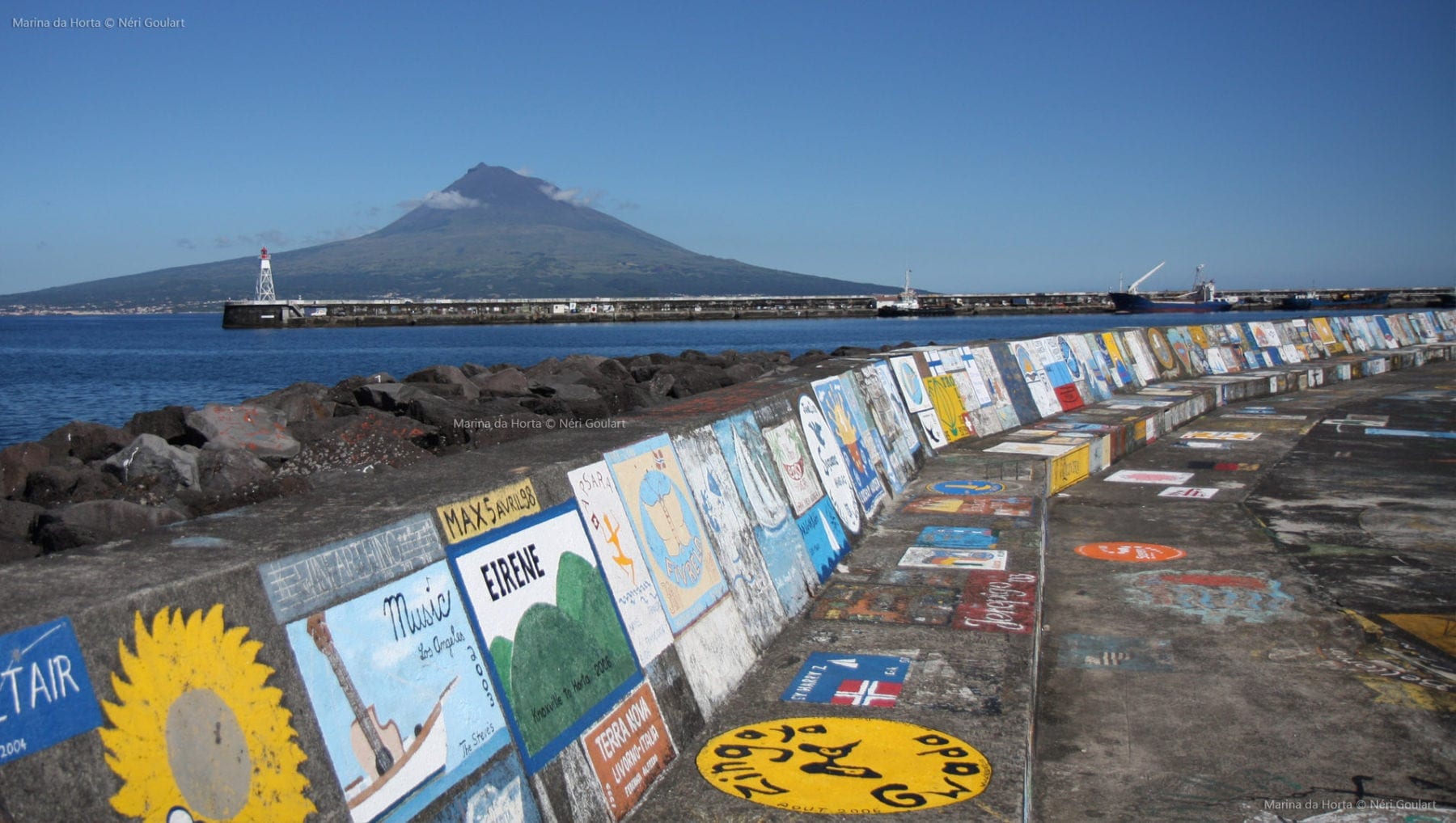
One might think that what stands out most at the Marina da Horta are the impressive types of boats. On the contrary, the main highlight of the location is the graffiti that adorns the beautiful marina.
The paintings and stories from all over the world, the moored boats—all of this makes the location a compelling stop for all visitors.
Considered the most important marina in the Azores and the fourth most visited marina in the world, it can accommodate up to 300 vessels.
Caldeira do Cabeço Gordo
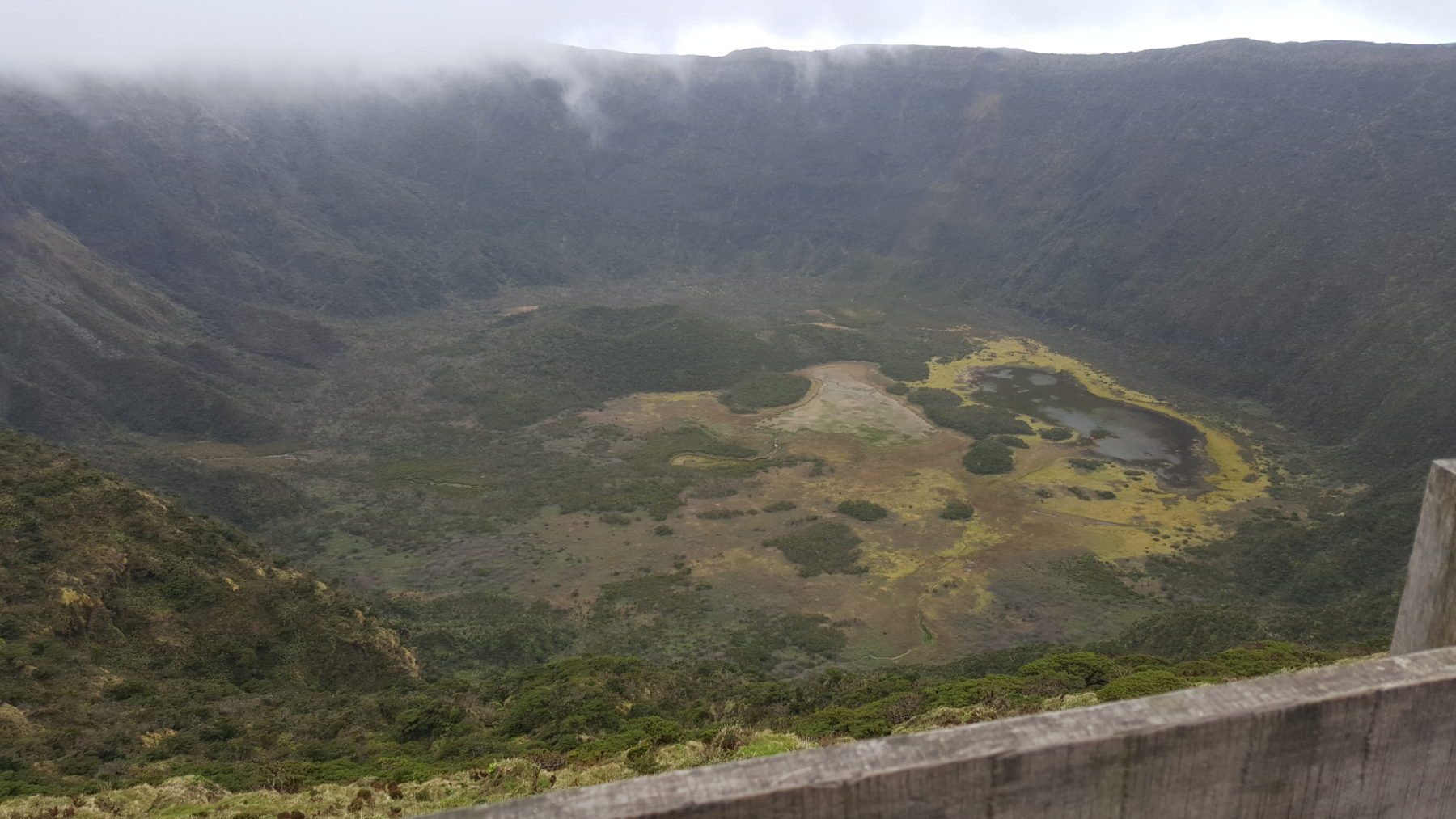
Fotografia de Renata Monteiro
Located in the parish of Capelo, the Caldeira do Cabeço Gordo is the most notable and highest point of Faial Island, standing at 1,043 meters above sea level. Here, you will find the famous viewpoint that offers breathtaking views of Faial, dominated by the green of the vegetation and the blue of the sea.
A feeling of peace and tranquility. Fascinating!
Vulcão dos Capelinhos
This year, 2018, marks the 60th anniversary of the emergence of the Capelinhos Volcano from the sea floor.
The phenomenon became a milestone in the history of volcanology worldwide, all occurring at sea, near the Ilhéus dos Capelinhos, an area where violent and frightening explosions occurred, destroying the lighthouse and several nearby houses.
There was an increase in the total area of Faial Island, which now covers approximately 173.1 km².
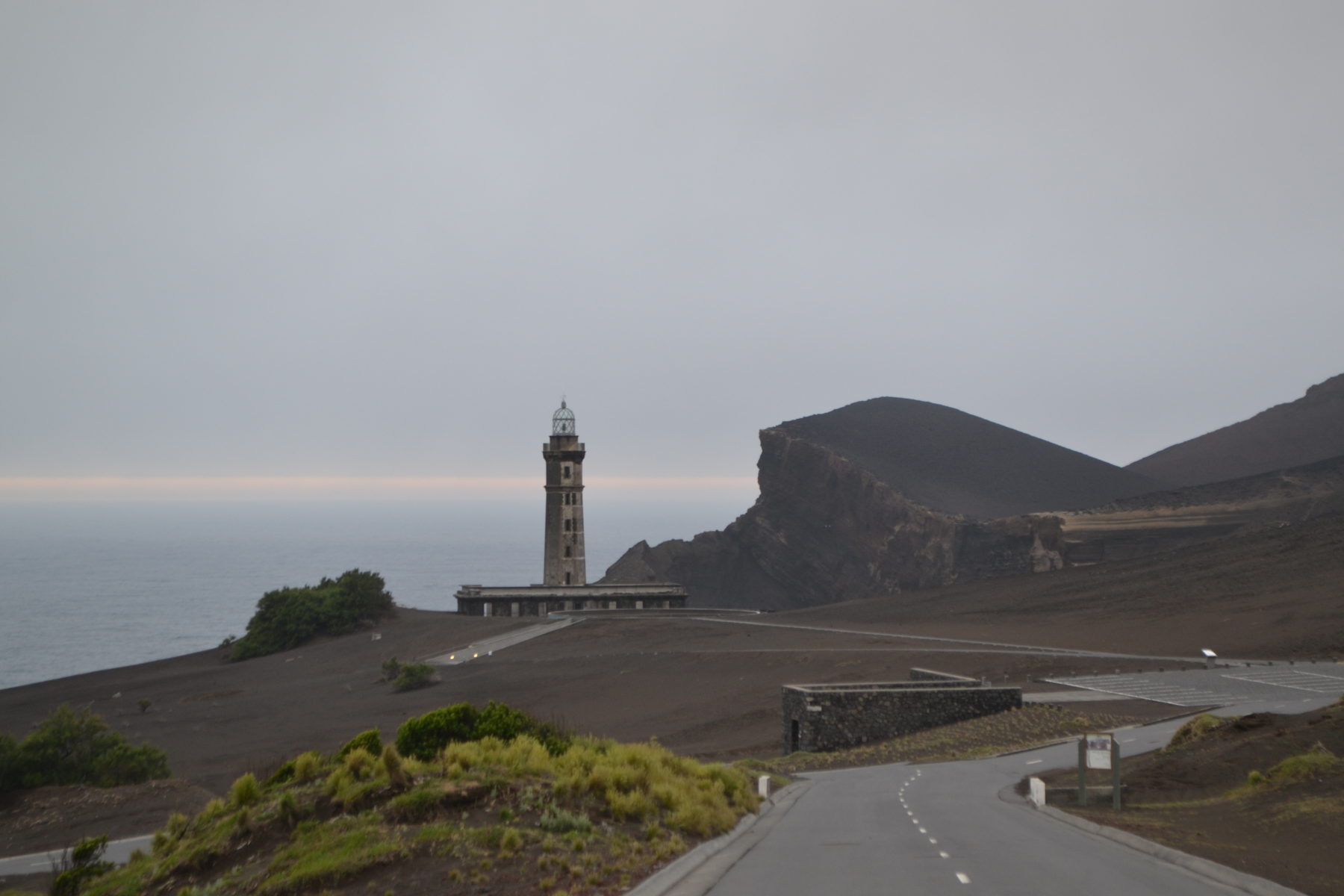
Fotografia de Carla Dias
Centro de Interpretação do Vulcão dos Capelinhos
This is the main place to obtain information about the history of the Capelinhos Volcano, offering a range of exhibitions that show visitors the eruption of the volcano, the formation of the Azores archipelago, and other stories about volcanism around the world.
In 2012, the European Museum Forum named the Interpretation Center the best museum in Europe, highlighting the historical importance of this location.
There is also an auditorium, a temporary exhibition of rock and mineral samples, and the Lighthouse, where you can enjoy a magnificent view of the place. Without a doubt, the Interpretation Center should not be missed on your itinerary.
Monte da Guia & Miradouro do Monte da Guia
Photo taken from Horta Tourism
Originating from a volcanic eruption in the sea and thus annexed to Faial Island, the Monte da Guia is another place in the Azores that leaves everyone impressed by its beauty, offering an excellent view over the Monte da Guia Natural Reserve, classified as a Protected Landscape Area due to its geological formation, endemic flora, and fauna.
To enjoy even more, the location features a viewpoint that offers a double panoramic view of the Caldeira do Inferno (or “little calderas”) and over the coast of Porto Pim Bay and the city of Horta. An excellent place for magnificent photographs!
Forte de Porto Pim
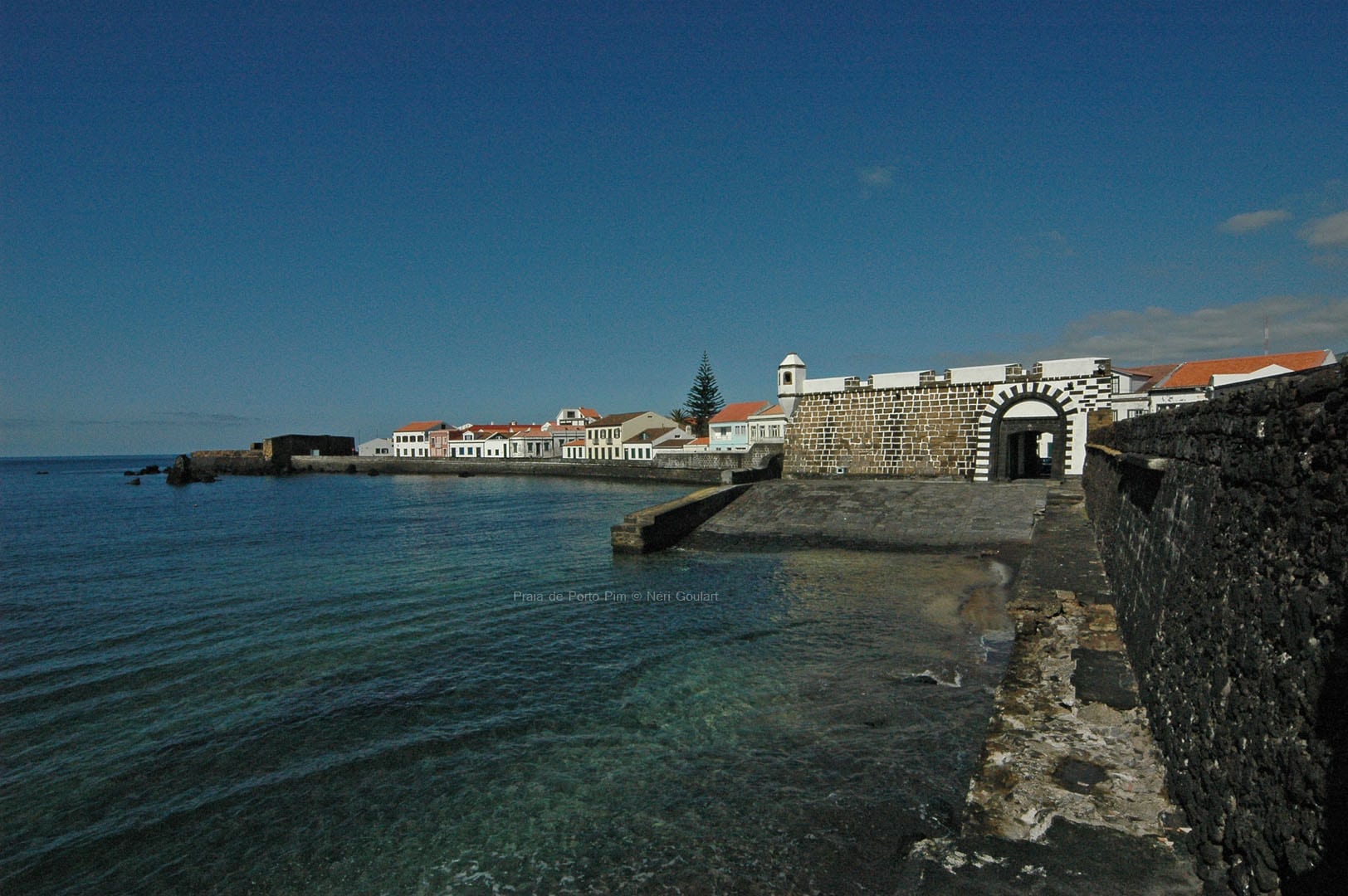
Located in the parish of Angústias, in Porto Pim Bay, the Fort was primarily designed to defend the city of Horta, on Faial Island.
The Forte de Porto Pim was also known as the Redoubt of Patrol or Bombardier, and its construction took place around the 17th century. Historians believe that by the end of the 19th century, the Fort served as a warehouse and storage for ship support materials. It holds significant historical value for Faial Island and the Azores.
Praia de Porto Pim
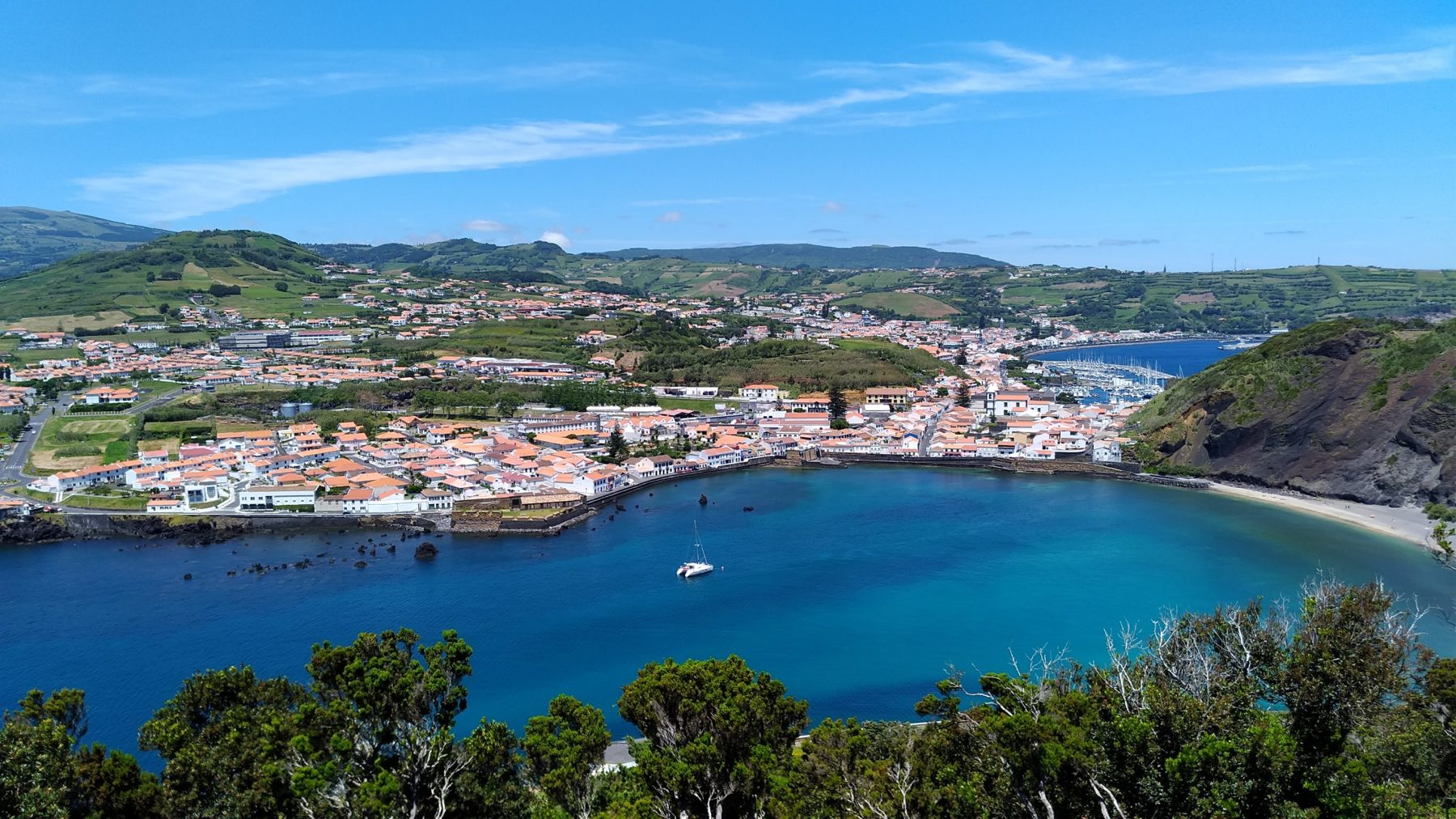
Fotografia de Rui Simas
Situated in Porto Pim Bay, within the city of Horta, the Praia de Porto Pim has a volcanic origin, which can easily be identified by the elevations surrounding the location, namely Monte da Guia and Monte Queimado.
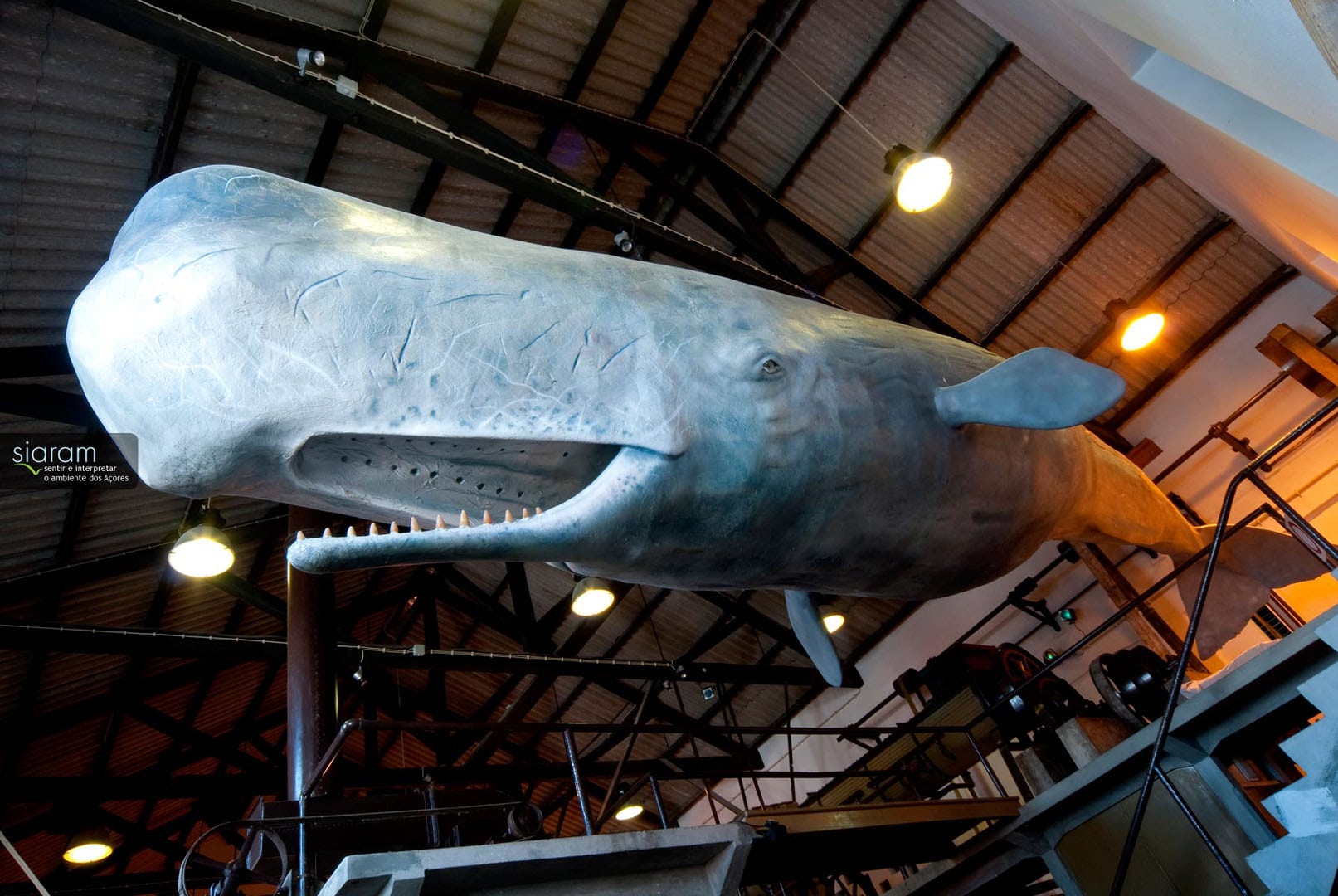
At the site is the Porto Pim Whale Factory, which reflects the past of Faial Island. Currently, the factory serves as an interpretive center for the former whaling activity in the Azores. The beach is very beautiful, with calm waters, safe for swimming, and spectacular landscapes around.
Praia de Almoxarife
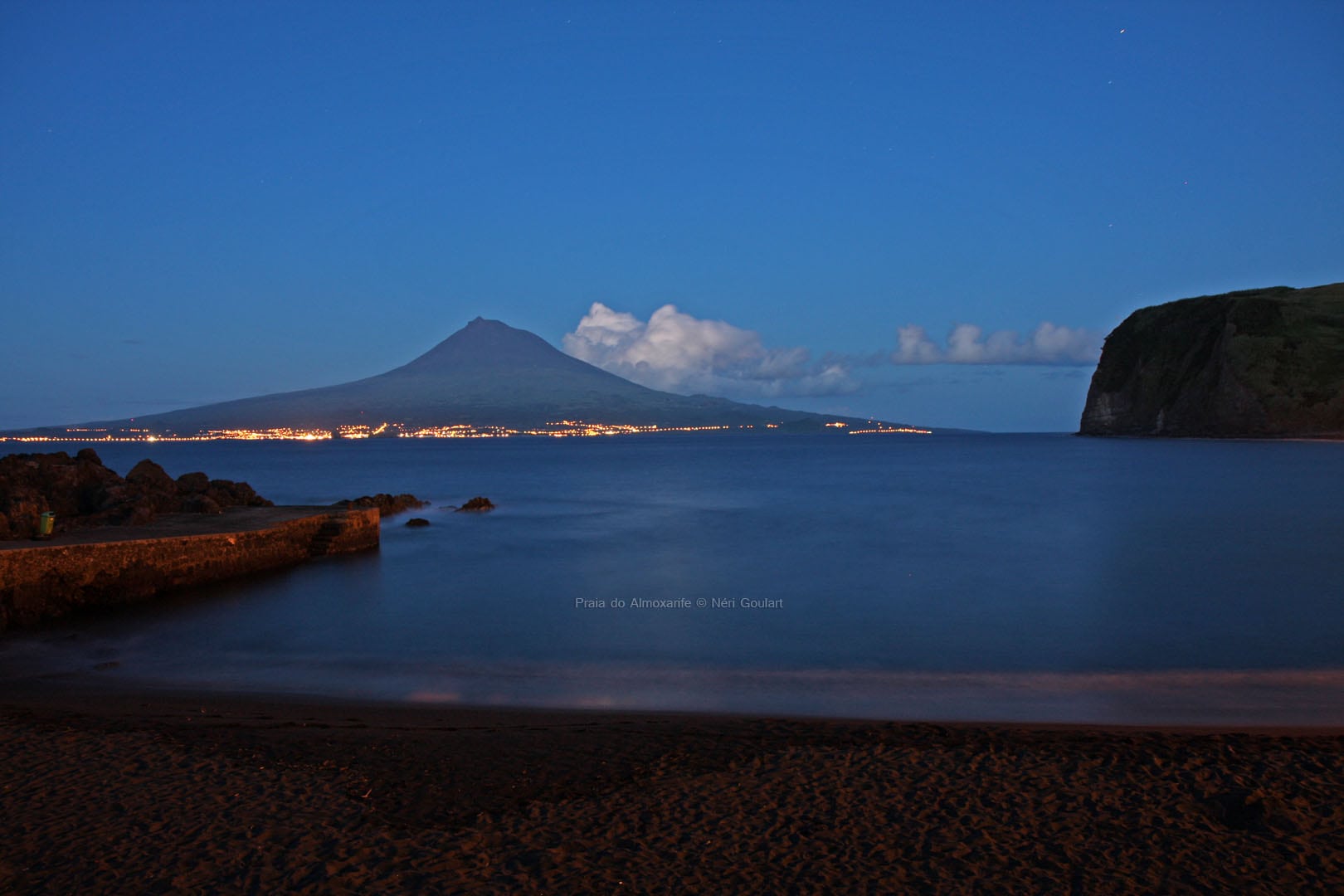
One of the most frequented beaches on Faial Island, the Praia do Almoxarife offers visitors a beautiful panoramic view of Pico Island and is very close to the city center.
The beach provides full support for people with reduced mobility, in addition to restrooms, showers, a bar, and a restaurant. For camping enthusiasts, there is a park nearby suitable for the activity.
Praia do Norte
Considered one of the most beautiful parishes on Faial Island, the Praia do Norte captivates visitors with its extensive green mantles, pure air, and traditions, leaving everyone who passes through amazed by the natural beauty.
It is worth mentioning that this parish has been marked by disasters that caused great destruction throughout its territory, but it has been restored thanks to the efforts of its population. The location features the only fajã in Faial, unique in beauty. It deserves your visit!
Piscinas do Varadouro
Photo taken from Horta Tourism (C) Paulo H. Silva / SIARAM
The Piscinas do Varadouro were formed by volcanic rocks and are a very pleasant spot, offering a fantastic view of the horizon over the blue sea. The waters are crystal clear and transparent, ideal for diving and taking fantastic photographs.
The location has support structures, such as restrooms and showers, in addition to a bar and accessibility for people with reduced mobility, providing comfort and safety for all.
Igreja São Salvador (Igreja Matriz)
Photo taken from Horta Tourism (C) Néri Goulart
This is the Mother Church of Faial Island, built in 1680, alongside the Jesuit College. The most notable features are the profusion of gilded carvings, the Chapels of Our Lady of Good Death, Saint Paul, Our Lady, and the Most Holy, housing various relics, tile work, and rich wooden images, making it a luxurious church with significant historical heritage.
Currently, within the premises of the Jesuit College, is the Museum of Horta, which holds an exquisite collection related to the history of Faial Island.
Torre do Relógio
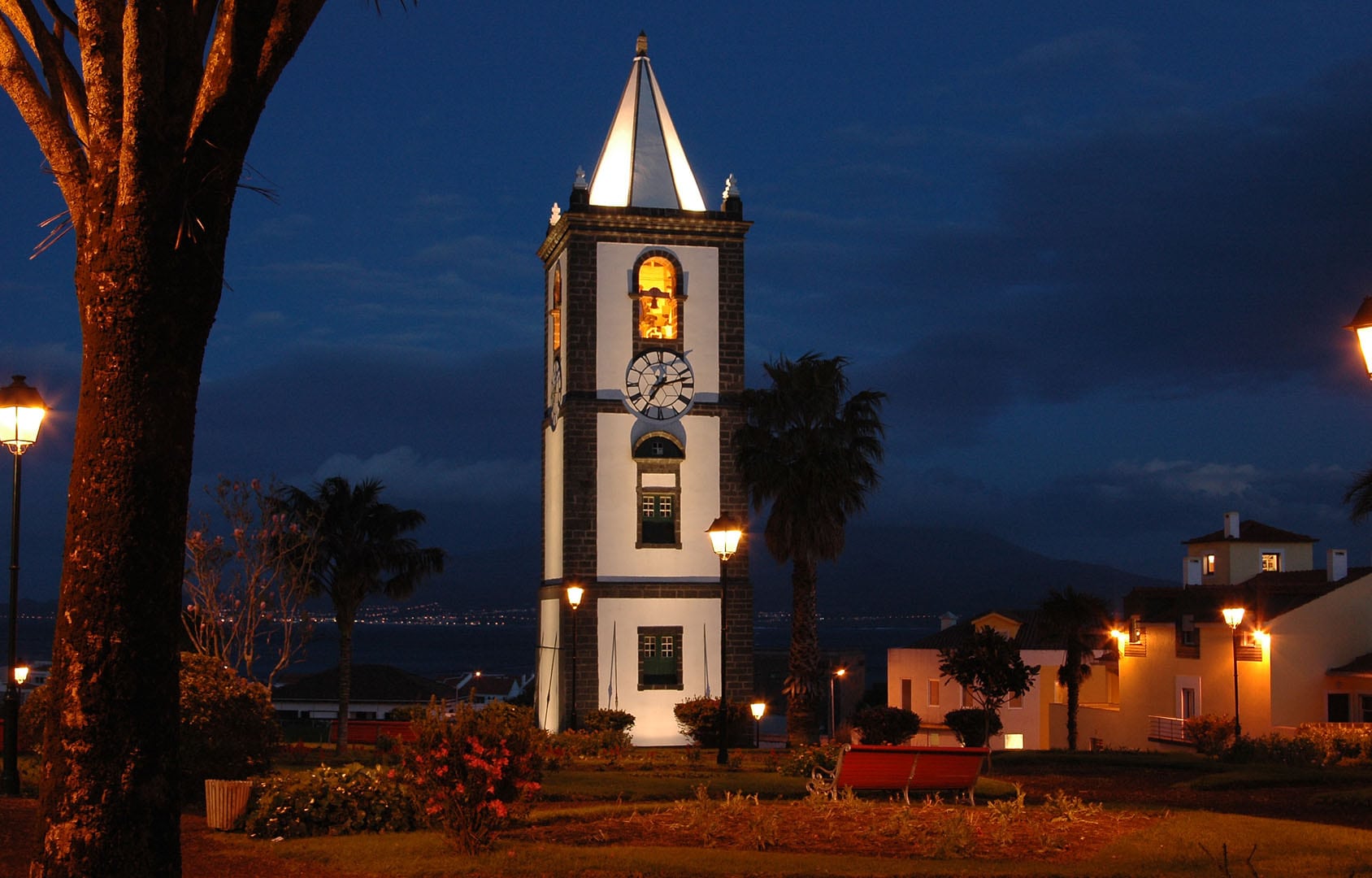
Built in the early 18th century, the Torre do Relógio was added to the Mother Church. It is situated in the historical center of Horta and is considered one of the most emblematic architectural elements.
Near the Florêncio da Terra Garden, the tower offers visitors a panoramic view of the city of Horta and the surrounding triangle islands.
Jardim Botânico do Faial
Photo taken from Horta Tourism (C) Néri Goulart
Open to the public since 1986, the Faial Botanical Garden is the ideal place for all flora enthusiasts, with the mission of conserving, studying, and promoting environmental education.
Visitors will discover some of the rarest plants in the Azores, as well as historical agricultural crops, an orchid house, and a collection of medicinal and aromatic plants.
Photo taken from Horta Tourism (C) Néri Goulart
There is a permanent exhibition related to the Natural History of the Vegetation of the Azores, which is quite interesting and worth a visit.
For location, hours, and prices, check the page.
Ponta da Espalamaca
Photo taken from Horta Tourism (C) Paulo H. Silva / SIARAM
The Ponta da Espalamaca is the highest point overlooking the city of Horta and Praia do Almoxarife, and it has one of the best viewpoints on the island, where you can see the bustling port and marina, as well as the other islands that make up the Azores archipelago, such as Pico Island, São Jorge Island, and Graciosa Island.
Another highlight of the location is the statue of Our Lady of the Conception, which enchants all the faithful who pass by, standing 30 meters tall.
Other Places to Visit and Activities on Faial Island
These are just a few highlights of places to visit on Faial Island; explore the island and enjoy every minute of your stay.
Learn more about Faial Island:
> The Best Beaches on Faial
> Horta Tourism
> Photos of Faial
> Videos of Faial
> Restaurants in Faial
> Businesses in Faial
> Accommodations in Faial
If you are planning to travel to the Azores, be sure to visit Faial Island, a place filled with natural beauty and points of interest. It’s worth it!
> Also see: 10 Activities to Do During Your Stay.
- 🔒 Travel insurance with 15% discount for the Azores or another destination Click here to simulate >
- 🛫 Looking for trips to the Azores? See these promotions >
- 🚘 Rent a car in the Azores? The best rent-a-car >
- 🧗🏼♂️ Activities and Experiences during your stay? Check it out here >
- 🐳 See Whales and Dolphins? Book now online >
- ❌ Have you had a canceled or delayed flight in the last 3 years? Receive your compensation here >

